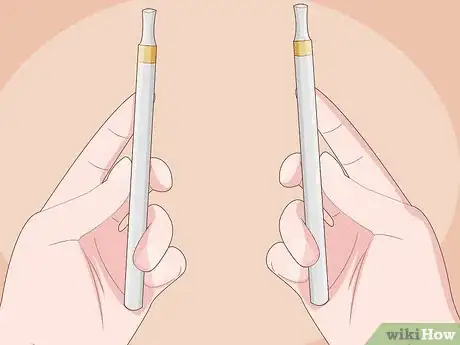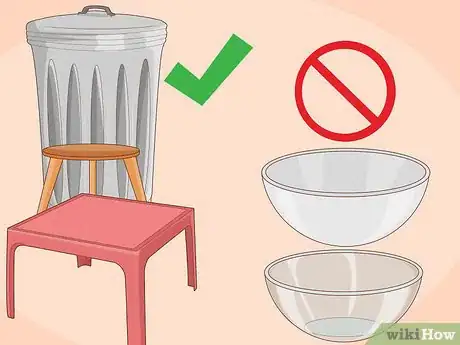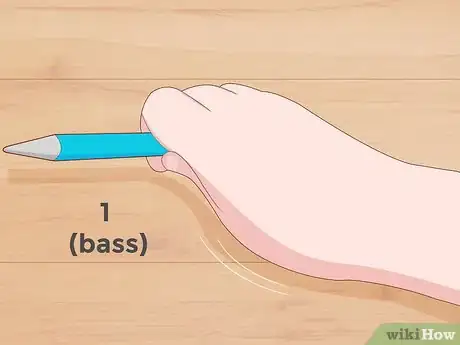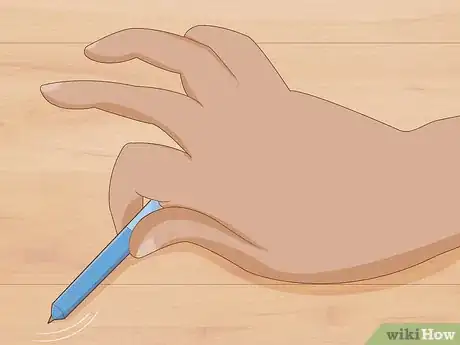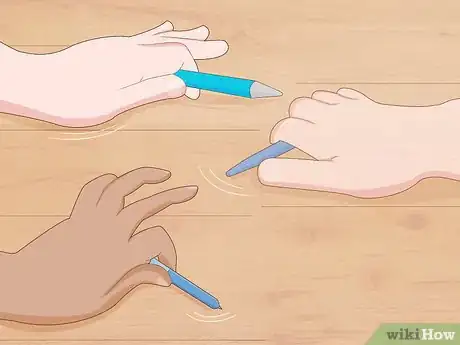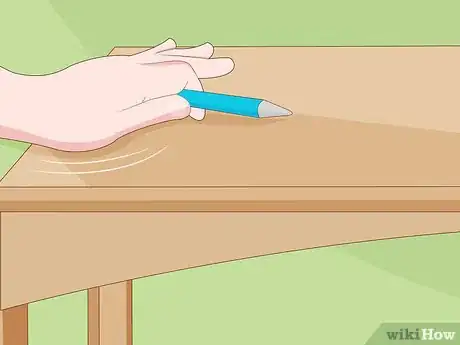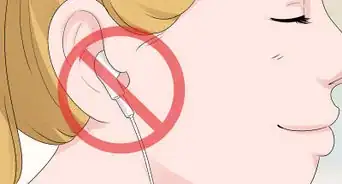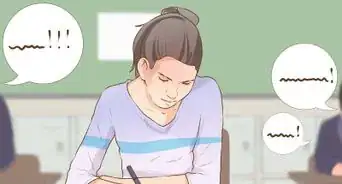wikiHow is a “wiki,” similar to Wikipedia, which means that many of our articles are co-written by multiple authors. To create this article, 21 people, some anonymous, worked to edit and improve it over time.
This article has been viewed 151,541 times.
Learn more...
You can pen tap anytime that you're holding a pen. It's a great way to occupy your hands and brain, and it's a skill that you can practice almost anywhere. All you need is a bit of creativity and a basic understanding of the sounds that make up pen tap beats. Watch videos of pen tappers, try to come up with your own beats, and most of all: practice whenever you can.
Steps
Pen Tap Basics
-
1Pick your pens. You can use two pens--one in each hand--or you can hold a pen in one hand, and use your the fingers and heel of your free hand to support the beat. Different pens will make slightly different sounds: heavier and harder pens will make a slightly deeper sound, while flimsier plastic pens will give you a lighter tapping sound. Make sure to use pens that are durable enough to stand up to heavy drumming.
-
2Choosing a surface. You can pen tap on almost anything, but some surfaces will sound better than others. Pick something smooth and hard to practice on at first: a desktop, a hardcover book, or a binder.
- If you drum on a hollow object, like a box or a garbage can, you'll get a deeper, fuller sound as the hollow space amplifies your taps; however, this might also drown out the clarity of the individual taps. Solid surfaces like concrete and stone, on the other hand, will barely amplify your taps at all.
- Experiment with new surfaces as you get better at pen tapping. Drum on wood, metal, plastic, brass, porcelain: tap surfaces with your pen and see how you like the sound. Be careful when making beats on fragile surfaces, such as glass or ceramic--you might like the sound, but be gentle so that you don't break anything valuable.
Advertisement -
3Hold the pen between your thumb and index finger. Hold it firmly enough that you can tap with it, but gently enough that you can adjust it for different sounds The tip of the pen should be facing toward the surface that you plan to tap. Wrap your other fingers lightly around the pen for support.
- Don't completely encircle the pen with your fingers; leave one long edge clear to make the "cymbal" sound. When you release the pen to make a "cymbal" sound, grip it with only your thumb and index finger so that the other fingers don't interfere with the beat.
-
4Make the "bass" sound with the bottom of your wrist. While you're holding the pen, thump the heel of your hand--the meaty part of your palm where your thumb meets your wrist--against a smooth, hard surface. Pen tappers call this sound "1".
- You can make the bass sound (1) with either hand, and you can quickly alternate two bass sounds for a double-bass effect.
- Use the bass sound to keep the beat. It's the deepest and most powerful of the pen tapping sounds, and it takes longer to execute than the pen taps themselves. Use it sparingly, for emphasis, and try to alternate bass sounds with the higher-pitched tapping sounds for an interesting beat.
-
5Learn to make the "snare" sound with the tip of your pen. Tilt the tip of the pen (the end that you write with) and tap on a smooth, hard surface to make a clean, high-pitched "tap" sound. Think of this sound as "2".
- The tip that you write with is usually heavier: it's loaded with a spring and other supports, in click-top pens, and it's typically where the cap of the pen fits. Use the heavier end for a more powerful snare, or the lighter end for a daintier snare.
- Be careful not to strike your fingers against the tapping surface while you make this sound. It should be crisp and clear. If you only have one pen, however, you can use the fingertips of your free hand to simulate sound "2".
- This is the quickest sound, in the sense that you can tap a lot of these out in rapid succession. Use speedy, rhythmic taps to make your beat more complex. Try alternating quick taps between two pens. You can use these to make a drum roll.
-
6Make the "cymbal" or "hi-hat" sound by clapping the long edge of the pen against a hard surface. Release your thumb from the bottom of the pen, and use your remaining four fingers to slam the pen into the table. Use your thumb and index finger to quickly pick the pen up again. This is sound number "3".
- Make sure to keep your fingers clear of the table when you release the pen. The easiest way to do this is to keep them on the top edge of the pen, opposite the table. Ideally, this sound can be almost as crisp and clear as the snare "2" sound.
- Think of this sound as an intermediate between the "snare" and "bass" sounds. It's slower and more powerful than the snare "2" sound, but it's much more high-pitched than the bass. Alternate sounds 1, 2, and 3 to add variety to your beats.
Learning Beats
-
1Try writing out your beat patterns. Remember: bass = 1, snare = 2, and cymbal = 3. Beat notation may vary between different communities of pen tappers; the 1-2-3 format is just an easy way to remember and write out the types of taps that you can use.[1]
- Start by trying out a simple beat pattern. Repeat: 1-2-3-2 (bass, snare, cymbal, snare) at a tempo that sounds right to your ear. Try to keep the space between each tap consistent each time you repeat the pattern. For example: 1 (medium rest) 2 (long rest) 3 (short rest) 2, repeat. When you can repeat the 1-2-3-2 pattern over and over again, with the same consistent amount of time between certain taps, you've got a beat.
- If you have trouble keeping a beat, just keep practicing. Try to internalize the beat, to get into the "flow" of it, so that you don't need to think about it to keep it going.
- If you're totally new to percussion, try an even simpler beat: 1-2, 1-2, 1-2. Make the bass sound with the heel of one hand, and follow it with a snare tap from a pen held in your other hand. Try to repeat this simple beat five times in a row with consistent spacing between each tap: 1.. 2. 1.. 2. 1.. 2. 1.. 2. 1.. 2.
-
2Join the online pen tapping community. Read pen tapping forums, and watch pen tapping videos for ideas. Make yourself familiar with the sound of pen tapping, and try to copy beat patterns that you like. Search YouTube for "pen tap" or "pen beats". You'll encounter a number of people who are making unique beats--even some who are rapping over their beats or combining them with other sounds.
- You may encounter a few YouTubers, such as cartinbredan los and Shane Bang, who upload a number of videos dedicated to pen beats. Watch the videos of pen tappers that you admire, and try to pick up pointers from their style.
- Search the web for "pen tap beat patterns". Pen tappers have collected their favorite beats across the Internet, usually written out in the 1-2-3 format, and you can try out the beats that you find. Some beats are easy for beginners to learn, and some require complex rhythms that may be better suited to advanced pen tappers.
-
3Experiment. Try tapping new surfaces, layering complex beats, and even asking your friends to collaborate with you. Remember that you don't need to stick to the 1-2-3 formula, and that the best pen tappers often find their own ways to make their beats sound unique.
- Try alternating surfaces within a beat: for instance, make your bass sound deep by thumping the wide side of a hollow box, but make your snare sharp and crisp by tapping the tip of the pen against the corner of the box. Try making a high-pitched, ringing cymbal/hi-hat sound by tapping the side of a glass with your pen.
- Try incorporating scratching--dragging your fingers or your pen across the surface for a second or two--to add another dimension to your beats.
- Try using your phone to record yourself tapping out a beat, then tapping, rapping, or singing over that beat as you play it back.
References
About This Article
Pen tapping is a fun way to keep your hands and brain busy. Hold a pen in each hand or use one pen and have your other hand free to support the beat with your fingers. If you drum on a hollow object, you’ll get a deeper sound, while solid surfaces will barely amplify your taps. For a cymbal-sound, try holding the pen between your thumb and index finger so the tip of the pen faces toward the surface you’re tapping on. Then, you can use the heel of your hand to add some bass to your taps. You can also try tilting the tip of your pen and tapping it on a smooth surface for a clean, high-pitched sound. To learn how to play certain beats with your pen, keep reading!
